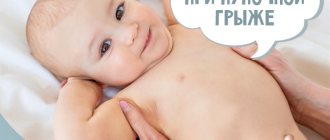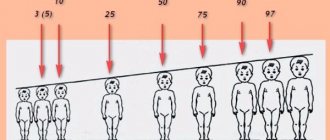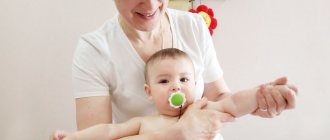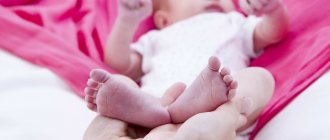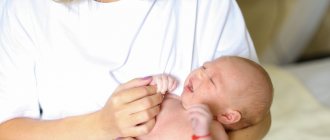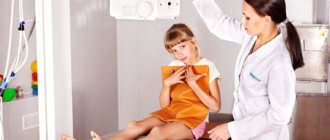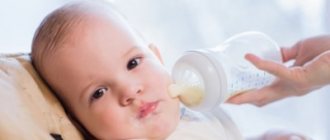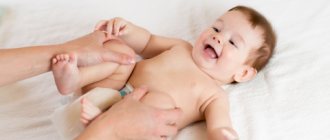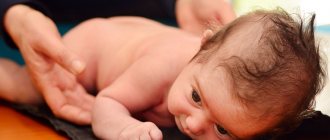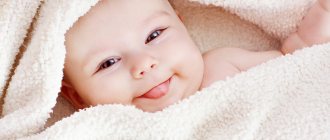Vibration chest massage for children is an additional way to treat diseases of the lower respiratory system. Babies under one year old have an immature respiratory system, as a result of which even minor inflammatory processes in the bronchi can cause congestion and accumulation of mucus. To eliminate excess phlegm, along with taking medications, vibration chest massage is used for children. This procedure helps alleviate the condition and speeds up recovery.
Why do they do it?
Bronchitis is a serious disease and has complications. With this disease, chest massage is not allowed for children under six months of age. It should not be done in case of tracheitis, an inflammatory process in the larynx, which is accompanied by hyperthermia. If the procedure is carried out without following the rules, the condition worsens.
With inflammation of the bronchi, inhibition of the cough reflex is often observed, as a result of which sputum is difficult to separate and remove from the organs. The secretion stagnates and sinks lower into the lungs. Among the types of massage, vibration chest massage for children is popular among parents because it improves breathing in diseases of the lower respiratory system. Thanks to therapeutic procedures, bronchial spasms are eliminated, phlegm is cleared from the lungs quickly, this is a good prevention of complications.
Vibration massage improves blood microcirculation and improves the functioning of the muscular system. With its help, the protective function of the bronchi, lungs, and respiratory tract is strengthened.
Types of massage
Massage for bronchitis has several varieties. After all, the method of carrying out the procedure directly depends on the age category of the patient, the stage of the disease, and the characteristics of the patient’s body. The method of treating bronchitis includes additional treatment using this type of massage:
- children's;
- canned;
- spot;
- honey;
- vibration;
- drainage;
- chest.
Baby massage
A child is prescribed massage procedures only if he is already six months old. This age limit is introduced solely for the safety of the baby. As you know, bronchitis is often accompanied by an increase in body temperature. Please note that massaging is strictly prohibited for a child with a high temperature.
Massaging activities are also contraindicated for inflammation of the larynx and trachea (false croup). Because in this case, spasms of the larynx will prevent the free release of sputum. The method of carrying out baby rubbing differs in that it needs to be done in a calmer and easier form.
This is very important because the respiratory system is formed in a child until he is about twelve years old.
Canning
This type of massaging is based on the action of a vacuum that occurs in a jar. A special jar is sucked onto the skin and various movements are made. In areas exposed to vacuum, blood flow begins to increase, which significantly improves cell nutrition. Cupping massage has a beneficial effect on improving respiratory functions and increasing the patient’s immunity.
Spot
Acupressure massage procedures are designed to influence specific points on the human body. To cure the symptoms of bronchitis, you need to rub the points that are located in the area of the neck, shoulder blades, ears, legs, and hands. Acupressure can be performed as a separate procedure or as an additional procedure. The desired point is gently massaged in a circular motion (counterclockwise). The main thing is to correctly determine the location of the required point.
Honey
The honey type of massage is prescribed for long-term disease processes. Pure honey, which is used for honey rubbing, contains a huge amount of microelements. The honey type of massage helps remove toxic substances from the patient’s body, which helps him recover faster.
Before starting the main procedure, the usual warming rubbing is carried out (without additional means). Only after this honey is applied to the patient’s body and massaging begins. After some time, the honey will begin to thicken and stick to the body. It is then that the main, and most important, part of the treatment begins. Hands should alternately stick and unstick from the patient's body. After the end of the session, the patient is sent to a warm shower. After this, they give him a non-hot compress and place it on the patient’s chest. It is advisable to drink an expectorant half an hour before the start of all therapeutic actions.
Vibrating
Vibration massage should be done using rhythmic tapping on the back. Most often used to treat young children. This type of massage is indicated even for infants. To carry out, clench your hand into a fist. Then begin tapping the patient's dorsal area, moving around the spine.
Drainage
Drainage massage for bronchitis also helps to remove mucus, which accumulates in the bronchi during illness. The patient lies on his stomach, the surface of the back is rubbed until the skin turns red. The back area should warm up well. Use your fingertips to tap the spaces between the ribs. Then we fold the brush in the shape of a boat and pat it. After this, you need to squeeze the diaphragm with your hands.
Rubbing should be done from bottom to top. After the entire procedure, the patient is seated on a chair and allowed to cough. The main technique is repetition, that is, the entire procedure is repeated several times in one session.
Chest massage
Massage for chronic bronchitis involves rubbing the chest with various essential oils.
You need to start by cleaning the surface of the skin in the area of massaging (chest, back, throat). Aromatherapy has collected a huge arsenal of essential oils, but it is advisable to use lavender, sage, thyme, and peppermint oils. Method of implementation: mix five drops of the selected oil with a base oil, carefully apply the composition to the chest, back, and throat. Remember that aromatherapy is only an auxiliary treatment, not a primary one.
Conditions
With the right approach, bronchitis can be treated comprehensively. Medications, herbal medicine, physiotherapeutic procedures, and massage are used. Regular massage alleviates the condition of acute and chronic bronchitis. The pediatrician himself prescribes this type of auxiliary therapy to the child to help him recover faster.
Before the age of six months, the procedure is not allowed. They do not do it for influenza, hyperthermia, or hypersensitivity of the skin.
Manipulations are carried out one hour before meals. The session is carried out in a cool room, the temperature does not exceed 22 degrees. 30 minutes before the start, the child takes an expectorant, which helps to further thin out accumulated mucus, and then drink a warm drink to expel the mucus.
General rules:
- Do vibration massage for children no more than twice a day, morning and evening.
- Conduct a session one hour before feeding the baby, two hours after he has eaten, so as not to further burden the digestive system.
- They do the manipulations an hour before they go to bed (so that the mucus that begins to come out and coughing do not interfere with normal sleep).
- The duration of therapy is half an hour, no more.
It is recommended to carry out the procedure at the stage when the cough becomes productive - wet, otherwise complete coughing up of sputum will not occur. Massage for children is an additional method of treating bronchitis, which is used in combination with medications.
Indications and contraindications
Massage to remove sputum in a child can be done only when the acute phase of the disease has not yet begun or has already ended.
Indications for use may include the following diseases:
- acute respiratory infections;
- flu;
- pneumonia;
- asthma;
- rhinitis;
- bronchitis.
Pediatricians pay special attention to the effectiveness of massage for rhinitis. The mucus, which is produced by the membranes of the nasopharynx, with a decrease in the body's protective reactions, begins to flow down the back wall of the larynx and quickly settles at the bottom of the bronchi.
Rhinitis nasal congestion is complicated by a special type of cough, the purpose of which is to get rid of viscous mucus that has entered the bronchi from the nasopharynx. Unlike the massage recommended for bronchitis, massage for rhinitis is carried out after instilling vasoconstrictor drops into the nose. This technique helps ensure maximum effect from the procedure.
Massage techniques are a type of physiotherapy.
They are contraindicated in several cases:
- with diagnosed heart failure;
- for complex kidney and liver diseases;
- for skin diseases.
A separate contraindication for massage is elevated body temperature. During the period until this indicator stabilizes, massages are not performed. All therapeutic measures at this time are aimed at normalizing body temperature.
When not to do it
The procedure is not permitted for children in the following situations:
- Hyperthermia;
- Skin lesions of allergic and purulent origin;
- Severe forms of malnutrition;
- Very low weight;
- Diseases of the muscular system, lymphatic system, bone and joints in the acute stage;
- Acute processes in the body of infectious etiology (whooping cough, tuberculosis);
- Acute diseases of the urinary system and liver;
- Congenital heart defects;
- Diseases of the nervous system;
- Hernia of the navel or scrotum.
If any of the listed contraindications exist, massage should not be performed for children.
Indications for massage
Massage for bronchitis in a child is an auxiliary treatment method that enhances the effect of medications and improves the baby’s condition. The main reason for undergoing a course of manual therapy is an incurable cough, accompanied by difficult sputum discharge.
Massage for a child with bronchitis is carried out in the following cases:
- Acute bronchitis. The procedure is carried out during the period when symptoms subside. Massage actions can quickly improve your general condition and prevent the development of complications.
- Chronic inflammation. Therapeutic actions are carried out during the period of remission. Periodic massage courses can extend the period of well-being and prevent the development of exacerbations.
- Obstructive form of the disease. Special massage techniques help reduce the severity of shortness of breath and reduce the frequency of asthma attacks.
Massage for children with bronchitis is indicated for any colds, as well as in situations where there are contraindications to taking medications.
How does the procedure work for children?
Depending on age, there are two types of massage. In children under one year old, the skin is very sensitive, the vertebrae are fragile, so you need to do the procedure through the palm. Mom can do it herself, armed with the necessary knowledge and information. The baby is placed on his stomach, on his mother’s lap, and the skin is lightly massaged in the direction from the shoulders to the buttocks. Such actions improve blood circulation. Next, the back is treated with Vaseline or other massage oil.
Place your palm along the baby’s spinal column, then methodically tap with the fist of your other hand. The same actions apply to the other side of the spinal column. The procedure begins with smooth manipulations, gradually they become more rhythmic and dynamic. Tapping with a fist alternates with patting with the edge of the palm.
Instead of tapping with your fist or the edge of your palm, you can lightly tap the intercostal space with your fingertips in children (video). The chest is not manipulated. The duration of one procedure does not exceed five minutes, then the child is given the opportunity to cough.
Places of influence
Massage for the removal of phlegm in a child can be done not only on the back, but also on the front of the chest. The techniques used when massaging the chest involve less pressure than when massaging the back.
Most often, one of the percussion massage techniques is used to massage the chest - rubbing.
The impact on the chest has several simultaneous effects:
- stimulates cough spasm;
- promotes liquefaction of secretions;
- increases natural mobility of the ribs;
- improves respiratory function.
If warming agents are allowed to be applied to the back, then it is recommended to rub the chest only with a moisturizing or softening cream.
The main areas of influence on the chest and back for active discharge of sputum are the following areas:
- lines along the spine on both sides;
- ribs in the direction from the center to the sides;
- collarbone;
- jugular cavity.
In addition to the back and chest, when diagnosed with pneumonia or prolonged bronchitis, it is customary to massage areas on the face. The nose and nasolabial triangle are massaged with rubbing or wave-like movements.
It is recommended to move from top to bottom, starting rubbing from the tip of the nose and ending with the bridge of the nose and the brow ridges. This technique helps to activate blood flow and stabilize the condition of the nasal mucosa, which is one of the constituent parts of the respiratory system.
Technique for older children
The massage technique for babies older than one year is carried out without additional lining of the palm. He lies on his stomach or sits (watches cartoons). The session begins with pinching the skin, the direction of movement is from the lower back to the shoulder girdle. Next, they tap along the spinal column with a hand bent into a fist, the direction is from the middle of the back to the shoulders. Each manipulation is carried out at least 30 times (video).
Sharp tapping is replaced by stroking; this technique helps improve the circulation of blood fluid and disperses congestion, helps separate accumulated mucus from the surface of the mucosa and removes it out.
At the end of the stroking movements, they begin cutting using the edge of the palm. Such manipulations are carried out along the spinal column, extending to the lateral ribs. At the end of the massage, pat her on the back and put her in a warm blouse.
Features of massage sessions for children of different ages
| Age period | Peculiarities | Number and duration of procedures per day | Notes |
| Infancy (up to one year) | To achieve maximum delicacy, it is recommended to use baby soap during massage. Basically, make stroking, soft, rubbing movements with the pads of your fingers on the baby’s back. Do not touch the spine. All movements are performed with the back of the hand located on the baby’s back. It is recommended to entrust baby massage to a specialist in this field. | 1 procedure 3 – 5 minutes. | Children under 3 months of age are not given therapeutic massage. Also, acupressure, cupping and honey types of massage are not recommended for children up to one year old. |
| Early age (up to 3 years) | At this age, you can conduct sessions at home on your own. During a vibration massage, tapping movements can be made not on your hand, but directly on the child’s back. You can gently massage your chest without pressure or effort. | 2 procedures for 5 – 8 minutes. | If the child does not have allergies, you can perform a honey massage. |
| Preschool age (up to 7 years) | It is possible to alternate and combine drainage massage with vibration massage. Cupping massage is allowed. | 2 – 3 procedures for 10 – 20 minutes. | Before cupping massage, your back should be lubricated with warm massage oil. |
| School age (from 7 years old) | All types of therapeutic massage for coughs are allowed. | 2 – 3 procedures for 20 – 30 minutes. | The intensity of movements should be average, but softer than for adults. |
It is necessary to determine the type of cough before starting procedures. For a dry cough that causes difficulty breathing, tapping will not help, but these movements can improve the condition for a wet cough.
Sources:
Spoiler
https://kashlynet.ru/lechenie/massazh/ https://FiguraDoma.ru/massazh/lechebnyj/massazh-pri-kashle-u-vzroslyh.html
https://sukhoikashel.ru/lechebnye-procedury/drenazhniy-massazh-u-vzroslyh-i-detej
https://tvoypulmonolog.ru/protsedury/massazh-dlya-borby-s-kashlem.html
https://prof-medstail.ru/bolezni-legkih/simptomy-i-lechenie/massazh-pri-kashle-polza-i-tehnika-vypolneniya-razlichnyh-vidov-massazha
https://MyKashel.ru/lechenie/massazh-pri-kashle-u-vzroslyh.html
https://healthperfect.ru/massazh-dlya-othozhdeniya-mokroty.html
https://kokch.ru/mozhno-li-massazh-pri-kashle/
https://kroha.info/health/disease/massazh-pri-kashle-u-rebenka
Popular massage techniques
Massage for a child with bronchitis to remove mucus can be performed using various techniques. The following types are often used:
With honey
One of the effective techniques used for chronic cough. The essence of this procedure is to rub natural bee honey into the baby’s skin. Honey is a healing substance, which contains many vitamins, microelements and nutrients. It removes waste and toxins from the body, and also strengthens the immune system and improves skin condition.
Before performing a honey massage, you must make sure that your child is not allergic to bee products.
The procedure is carried out in several stages:
- Dilute honey with water and heat it to a temperature of 40 degrees.
- Lay the child on his stomach and apply honey to the skin in the area of the shoulder blades. Pat the treated area with your palms until your hand no longer feels sticky.
- Once the honey is completely absorbed into the skin, continue patting the lung area for a few more minutes.
- Cover the child with a blanket and let him lie there for half an hour. Ideally, the baby should sleep after the procedure.
The honey method has an effect on the source of inflammation and promotes rapid regeneration of tissues of the respiratory organs.
Canned (vacuum)
For this procedure, you need to buy special glass or silicone jars. 2 pieces will be enough. The essence of the technique is to actively move the cups over the skin of the back, previously lubricated with massage oil or rich cream. You need to massage the skin with cups according to patterns, moving the jars up and down along the spine, in a spiral, zigzag, semicircle, and so on. When performing movements, the skin should warm up and turn slightly red.
Upon completion of the procedure, the baby should be covered with a blanket and put to bed. To achieve the effect, vacuum massage should be performed before bedtime for 2-3 days. This technique is only suitable for children over 3 years old.
Drainage
A type of postural therapy in which the patient lies in such a way that the head is lower than the level of the body. To assume this position, you need to place a cushion or pillow under the patient's stomach.
Usually used for difficulty expectorating pathological exudate. Drainage massage for children with bronchitis is performed as follows:
- Stroke the baby's back with your palms, warming and kneading the skin.
- Stroking your back from bottom to top.
- Tap with the end of your palm in the area of the ribs, and then fold your palms into a boat and repeat.
- Place your palm on your back in the lung area and make 10 taps with your fingers.
- Sit your baby down and let him cough.
- Repeat the procedure several more times.
At the end of the session, the child should be wrapped up and allowed to rest for 30 minutes. The procedure should be repeated every day for a week.
Vibrating
The technique is similar to the drainage technique, but there is one slight difference: you need to tap on the back with the edge of your palm, moving from the spine to the lateral areas of the chest. You need to move along the ribs, making indentations from the spine of 4-5 cm.
You should also tap your fingers between the ribs. In order for sputum to come out faster, the child should be placed so that the head is lower than the chest.
Tapping should be done for 5-7 minutes. After this, the child should sit up and clear his throat. To achieve the effect, the procedure must be repeated 3-4 times.
Spot
This technique is used as a complement to other massage techniques. The essence of acupressure is physical impact on certain points. Skin areas located behind the ears, in the neck and shoulder blades, as well as on the hands and legs are often subjected to acupuncture. The impact falls on the antitussive point, which is located at the junction of the collarbones.
To carry out this massage technique, you need to know where exactly the accessory points are located. Ideally, the procedure should be performed by a specialist with medical training.
Why does massage help remove mucus?
When performing drainage massage for children when coughing, the bronchial tree warms up. Thanks to this, the mucus liquefies and begins to flow from the small bronchi into the large ones. From the bronchi it enters the trachea and exits with a cough.
Children have poorly developed respiratory muscles, so the process of coughing up accumulated phlegm causes difficulties. With a constant cough, the child's throat becomes irritated and each coughing attack causes pain.
Massage procedures are allowed even for newborn children. But to carry them out, it is better to hire a children’s massage therapist who knows how and with what force to massage infants. During the procedure:
- blood and lymph flow is stimulated;
- increased mobility of the ribs;
- respiratory function stabilizes;
- the muscles that are involved in the breathing process are strengthened.
Massage movements help to increase the activity of the cilia located on the mucous surface of the bronchi and involved in the process of pushing mucus out of the respiratory organs. Stimulation of lymph flow and blood circulation increases the production of bronchial secretions, thanks to this action the mucus thins.
But you can massage a cough only if it is wet. Using the procedure, you can enhance the effect of expectorant medications.
